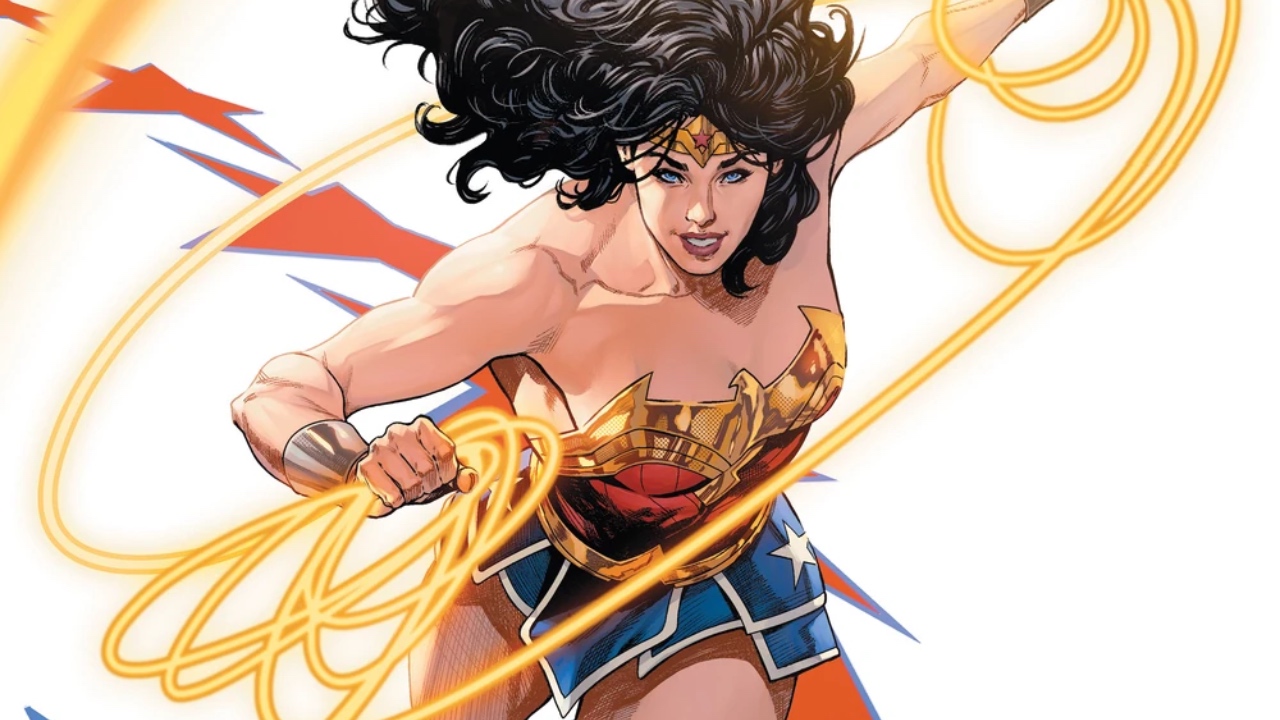[[{“value”:”Photo: DC Comics.
Writer Greg Rucka’s Wonder Woman run rivals that of Pérez, not because he rebooted or reimagined the character, but because he took Pérez’s stories to their logical end. In Rucka’s first arc, “Down to Earth,” penciled by Drew Johnson, Wonder Woman is still an ambassador to the rest of the world, which means that she must serve a political purpose by representing Themyscira in the United Nations.
Instead of being embarrassed by the inherent goofiness of an Amazonian princess hanging out with diplomats in suits and ties, Rucka leans into the absurdity. A minotaur shows up in the office. Diana misses meetings to fight Doctor Psycho. Rucka also gives Diana her own Lex Luthor in Veronica Cale, a PR whiz who uses Wonder Woman’s own words against her.
Rucka likewise finds conflict in the way Diana’s idealism clashes with the rest of the world. The scenes in the new Superman trailer, in which Clark gets mad about being called out for stopping a war, feel like they come from Rucka’s Wonder Woman more than they do any Superman comic. But Rucka’s comics have one big difference: Diana knows that she represents her island and thus invokes the same rights and respect as any dignitary, even if that means fighting hostile nations.
Photo: DC Comics.
This is a debatable pick, and some Wonder Woman fans will likely head straight to the comments. For as much as Grant Morrison completely understands Superman and Batman, they tend to stumble when writing Wonder Woman. By their own admission, Morrison moved Wonder Woman off the board early in 2005’s Final Crisis simply so they wouldn’t have to deal with her.
The three Earth One graphic novels do not prove that Morrison, working here with artist Yanick Paquette, has finally cracked Diana. There are A LOT of off-beat moments in the story, including an oft-shared panel in which she asks Steve Trevor, a Black man in this universe, to allow her to chain him up. However, even in that weird bit of dissonance—which, it should be pointed out, isn’t ignored, as Trevor explains to Diana why her request is so offensive and she listens—Morrison tries to get at the function of Wonder Woman.
William Moulton Marston created Wonder Woman in 1941 to spread his worldview, one built on the belief that society functions best if men enter into “loving submission” to powerful women. As a result, there’s a lot of bondage in early Wonder Woman comics, which serves a philosophical function more than it does a sexual function. That aspect has been forgotten by most modern Wonder Woman stories, but Morrison was right to bring it back, even if they did so imperfectly.
“}]] As James Gunn starts working on a new Wonder Woman movie, let’s take a look at the comic books that should guide him. Read More

